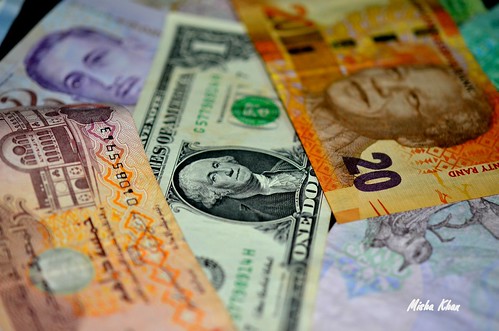Spanish Money versus American Expense
I’ve got Spanish money. By that, I don’t mean pesetas. Those haven’t been in circulation since 2002. Nor do I mean euros. They don't have much use here in New Jersey.
By Spanish money, I mean the amount of money that would lead to a nice standard of living in Spain. The problem with that is, I don’t live in Spain. I returned to the USA at the end of May to renew my visa. And all the time that I've been here, I realized that the biggest transition I needed to make was in managing a serious lack of dollars and cents.
By All Means
In Madrid, I managed to scrape by on about 1200 Euros a month. I was by no means rich or even comfortable, but I made it through. This meant that I had enough money to have a decent night out on the town. I even took a few trips both around Europe and to various regions in Spain.
In Minorca, things were much easier. I was able to live comfortably at around 900 euros per month. Although, to be honest, that isn’t exactly a fair comparison. There wasn’t much to spend money on during the offseason on a small Mediterranean Island. Besides, in Minorca, my standards were much lower. There comfortable generally meant lying in bed and watching Netflix all day.
But here in New Jersey, I find that lying and bed and watching Netflix is the only thing that I can afford to do. Despite having two, sometimes, three jobs, now that I’m stateside, I find myself more than a little cash strapped.
The Airport
I first felt the pinch in at JFK. At the airport in Barcelona, I stepped out of the taxi and I grabbed the closest suitcase cart without a thought. They were everywhere and they were free. It was a simple non-transaction. I needed one to help me ferry my suitcases inside the building, and there were there in abundance to help me. But in New York, I realized that the same cart cost more than a thought. It was $6, to be exact.
Astonished and annoyed, I spent the rest of my time in the airport grumbling to myself.
“Why did I needed to pay money for something that had been free on the other end?” I thought as I stuck my card into the machine. It was the beginning of a series of complaints. Such as: “Who is responsible for this?” And “Why $6 dollars?” “Is that somehow better than $5, but not as offensive as $7?” I needed answers and wanted a refund. “What’s next?” I thought. “Would I have to pay for the carts at the supermarkets too?”
[caption id="" align="aligncenter" width="500"] Photo by mishakhann [/caption]
Photo by mishakhann [/caption]The Supermarket
Well, not exactly. But speaking of supermarkets, it is now my position that the American variety are nothing if not a huge rip-off. Here’s why: On my first stateside trip to the grocery store, I decided to forego my former favorite haunt—Whole Foods. I knew well enough that I couldn’t afford to pay $50 for a bag of kale and a box of almond milk. So, instead, I chose buy my lettuce at what used to be considered the budget supermarket.
As I perused, I filed my cart with vegetables and avoided the meat aisle. I had done the same thing in Spain to keep costs down. Though I hadn’t shopped there in two years, I wasn’t completely naive. I knew that it would be somewhat expensive. But I expected to pay no more than $50 or $60 dollars. In Minorca, a cart with the same content would have cost approximately 35-40 euros.
But I wasn’t in Minorca anymore I soon realized. By the time the girl at the register had finished ringing, the total was over $100 dollars. I was floored. And a bit panicked. I didn’t even know if I had enough money to cover it. Despite all the issues I had while living in Spain, that fear of whether or not my card would work had generally evaded me.
Luckily, I left with supermarket with both my cart and my dignity in tact. But I was still amazed that non-organic vegetables that had been shipped in from Peru had cost me so much stress and money.
The Bank
The last lesson I learned was never to exchange my money at a bank.
This one really took me by surprise. I showed up at my local branch with 150 euros in tow. I asked the teller if I could deposit it into my American bank account and she obliged. Everything was going well until she told me the rate.
In exchange for the 150 euros I gave her, she would deposit 155 dollars in my bank account. For those who don’t know, the Euro is generally stronger than the dollar. And after two years of being paid in Euros, I knew the approximate exchange rate off the top of my head. The rate should have been between 170 and 175 dollars at minimum. There was absolutely no way that 150 euros were almost equivalent to dollars. But I was powerless. I needed to use the money and as I stated earlier, euros are useless in New Jersey.
After nearly two months, I adapted my staying indoors and searching for more streams of income. It has been far from easy. But it is a reminder of the old saying, you never know what you’ve got till it’s gone. And I know one thing for certain now, as soon as my visa clears, I will be gone. Despite its (multitude) of issues, at this point in my life, I rather be in a place where I can keep my money where I can see it and use it. And for me that means in my bank account, not in my grocery cart.

Comments
Post a Comment